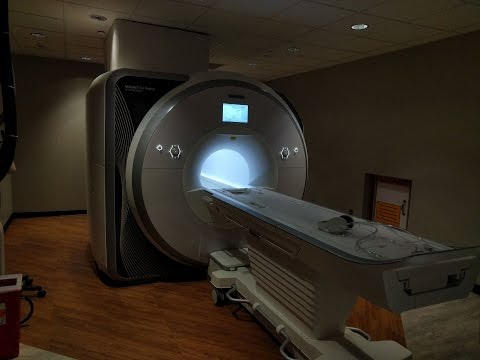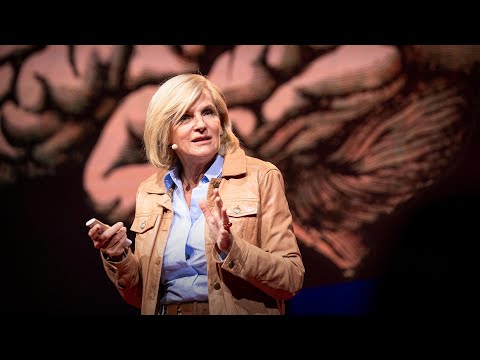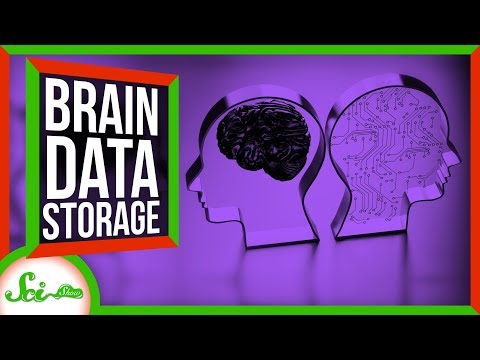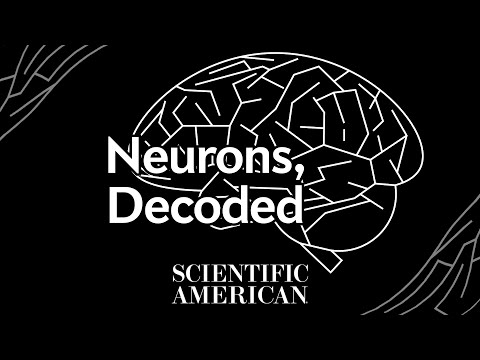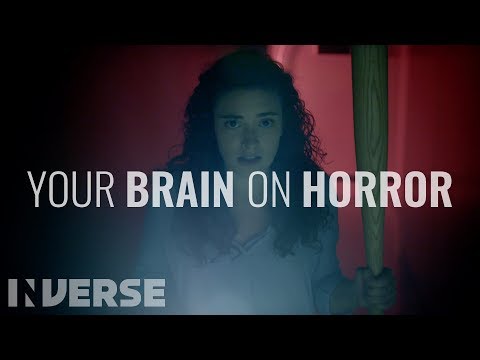It has allowed us, over the ages, to transform rocks and trees into houses; to craft glass into lenses through which to view stars or microbes; to build cities and nations from the ground up; to create masterpieces in the visual, literary, performing, and other arts; and to study the past and the present while imagining a myriad of possible futures. Even more, the brain links all these enterprises and makes them available to everyone across the world and across time. It is an astounding organ, of which we still have much to learn. These 10 unusual, little-known facts about the human brain may remind us just how astonishing and marvelous the center of our nervous system truly is.
10 The Brain Runs Hot
Research has found that, like mechanical gadgets, the human brain heats up when it works, its temperature rising to 104°F (40°C), as opposed to the rest of the body’s 96.8°F (37°C). Although such a temperature shows that the brain is healthy, unusual heat signatures could indicate “brain damage or a disorder.” 4-D maps of brain temperatures throughout the day show that female brains are a bit warmer than male brains, maybe because of the menstrual cycle. The study found that daily variations in both female and male brain temperatures were within 1.8°F (1°C) on average, with cooler temperatures in the brains’ “outer parts.” Brains are cooler at night and warmer during the day, while older people’s brains tend to run hotter than those of younger folks. The study suggests potential avenues for diagnosing and treating brain damage or disorders.[1]
9 Particulates May Damage the Brain
According to an online article, researchers have concluded that inhaled ultra-fine toxic air pollution particles can move from the lungs into the bloodstream, invading the brain and becoming embedded in its tissue, where the particles can remain “longer than in any other organ.” Watch this video on YouTube The invasion point appears to be the blood-brain barrier, which Harvard Medical School describes as “a physical separation between the brain and the circulatory system which normally only permits small, essential molecules like oxygen and glucose through.” The researchers found this possibility alarming since such invasive particles, which include calcium, iron, malayaite, and anatase titanium dioxide, can cause neuroinflammation and severe cognitive decline.[2]
8 Some Brains Cannot “Read” Faces
Face blindness, or prosopagnosia, is a neurological disorder characterized by the inability to recognize familiar faces. Although those who suffer from the condition are aware that they are perceiving a face, they are unable to tell whose face they are seeing, sometimes even when the face is that of a family member or themselves. As a celebrity, Brad Pitt, who suffers from the condition, puts a human face on the disorder. He revealed that people often do not believe that he cannot recognize or identify their faces. Consequently, they think him “disrespectful, egotistical, [and] conceited.” As a result, from a young age, he has always felt very alone. The condition often affects people from birth. Although he may feel alone, Pitt is not; according to the National Health Service, one in 50 people are affected by prosopagnosia, which could be caused by “abnormalities in a part of the brain called the fusiform gyrus.”[3]
7 The Brain Can Be “Rewired” (Maybe)
Can the brain be rewired, so to speak? The answer seems to be maybe. Psilocybin mushrooms could represent a treatment for major depressive disorders, which often resist traditional medical treatment. Indeed, the U.S. Food and Drug Administration refers to psilocybin as a potential breakthrough therapy. Watch this video on YouTube Once the intestines convert the substance into psilocin, a chemical with psychoactive properties, it could be used to treat a variety of ailments, including cluster headaches, anxiety, anorexia, obsessive-compulsive disorder, and various forms of substance abuse and post-traumatic stress disorder for a period of time. Psilocybin can break the obsessive hold that self-critical and negative, anxious, or fearful thoughts have on depressed individuals. This allows more flexible thinking and, researchers contend, permits the brain’s neurons to develop new dendrites, which facilitates communication between brain cells and, in turn, builds and solidifies new circuits in the brain. However, Matthew Johnson, a professor in psychedelics and consciousness at Johns Hopkins Medicine, cautions that “a psychedelic doesn’t work for everyone.”[4]
6 Modern Life Changes the Brain
The stress and demands of modern life can be harmful to the brain’s prefrontal cortex, producing “frontal fatigue,” a condition that makes people more vulnerable to mental disorders. One doctor offers a three-step treatment plan for reducing stress and restoring balance in life. First, recognize the signs of frontal fatigue: having difficulty maintaining attention, forgetting words and small things, struggling to multi-task, and giving vent to irritability or emotions. Dr. Rego suggests engaging in hands-on activities, such as making crafts, cooking, creating art, playing an instrument, gardening, or taking on a DIY project. Indulging the senses in pursuit of aesthetics is also recommended: “See, smell, hear, and taste what life offers. Investigate new foods, art, music, and especially nature.” Social interaction is also advised: “Talk with, question, greet, or chat with others—and not just those close to you, but people you see, work with, pass by, and wait in line with.” His third recommended strategy for soothing frontal fatigue is to better manage thoughts and feelings by seeking meditation or diversion, reading challenging books, and working on becoming less and less irritable. In addition, Rego prescribes disconnecting from tech and social media whenever possible.[5]
5 The Brain Compresses Data
In order to perform efficiently, the human brain ignores irrelevant data, focusing exclusively on information pertinent to whatever task it is performing at the moment. According to neuroscientists, the brain adopts tunnel vision or maximizes performance while minimizing cost by using data compression. Watch this video on YouTube As a result of the research that researchers Christian Machens and Joe Paton, among others, conducted, principles can guide future studies concerning how mental constructs of the world might support intelligent behavior in the context of life sciences, artificial intelligence, and decision making.[6]
4 Einstein’s Brain Had Some Unusual Features
Black-and-white postmortem photographs and tissue samples of Albert Einstein’s brain, as well as autopsy results, showed not only typical characteristics but also several unusual features. His brain exhibited all the changes that accompany aging, and two parts of his brain contained an unusually large number of non-neural cells called glia for every neuron, but the genius’s parietal lobe lacked a furrow and a structure called the operculum. It is believed that the missing furrow may have “enhanced the connections in this region,” which is thought to be involved in visuospatial functions and mathematical skills. Another striking feature of Einstein’s brain lies in the “complexity and pattern of convolutions on certain parts of Einstein’s cerebral cortex,” which increased the region’s surface area and could have contributed to his remarkable abilities, aiding his thought experiments on the nature of space and time. One of the facts about the theoretical physicist that may be especially surprising to many is the fact that Einstein’s brain was actually smaller than average.[7]
3 A Few Animals’ Brain Cells Are Similar (Somewhat) to Our Own
There’s no mistaking the von Economo neuron. Named in honor of anatomist Constantin von Economo, it’s big and distinctive in appearance—and it’s found in the brains of humans and animals alike. Well, in the brains of some animals, mostly larger ones, such as great apes, whales, dolphins, cows, and elephants. Watch this video on YouTube Scientists theorize that it evolved independently in big-brain or especially social animals. The neuron is absent in people with some brain diseases, and it is overabundant among super-agers, older people who don’t experience the standard memory loss of aging. Other than these few facts, little more is known about the neurons because animals typically used in lab experiments, such as rats and mice, do not have them. Further studies, it seems safe to say, will be conducted on the giant neuron.[8]
9 The Brain Loves a Surprise
MRI scans of the human brain reveal that humans are hard-wired to derive pleasure from unexpected events. Surprises, in particular, elicit strong responses from the nucleus accumbens, aka “the brain’s pleasure center.” As an assistant professor of psychiatry at Emory University in Atlanta explained, birthday gifts are good to receive, but presents received on other days are better because they’re unexpected. Surprises, when they’re good, cause a rush of dopamine that lights up the nucleus accumbens like a Christmas tree, as noted by an associate professor of neuroscience at Baylor College of Medicine in Houston.[9]
1 The Brain Reacts to Horror Movies
Not surprisingly, perhaps, neuroimaging reveals that the brain also reacts to horror movies, especially when such films build toward the shocking or horrific event rather than hitting the audience with a jump scare. There’s no flood of dopamine, though. Instead, areas of the brain associated with visual and auditory processing are more active when anxiety slowly increases during horror movies. A lot goes on inside the brain after such a moment, as areas associated with emotional processing, threat evaluation, and decision-making increase in activity. In every movie, protagonists (and, often, other characters) experience conflict, as they encounter threats to their safety, if not perils to their very existence. However, horror movies rise above other genres of film by upping the ante—by having some kind of “superhuman or supernatural threat that cannot be reasoned with or fought easily.” Horror movie audiences, researchers found, seek excitement and an excuse to socialize by watching scary movies together rather than alone. Psychological horror inspired by actual events is most frightening to audiences, and subjects were most scared by implied or unseen threats rather than concrete, visible menaces. In other words, the creeping foreboding dread that occurs when one feels that something isn’t quite right is more frightening to most audiences than the sudden appearance of a monster that makes us jump out of our skin. In one study, subjects watched horror movies while they were inside a magnetic resonance imaging scanner that measured their neural activity. Results showed that, as anxiety slowly increased, their brains became more active, seeking environmental cues. On the other hand, introducing sudden and unexpected shocks stimulated areas of their brains associated with emotion processing, threat evaluation, and decision making, enabling a rapid response. Nevertheless, the “latter parts of the brain remain in continuous communication with the former” to facilitate responses to perceived threats.[10]
